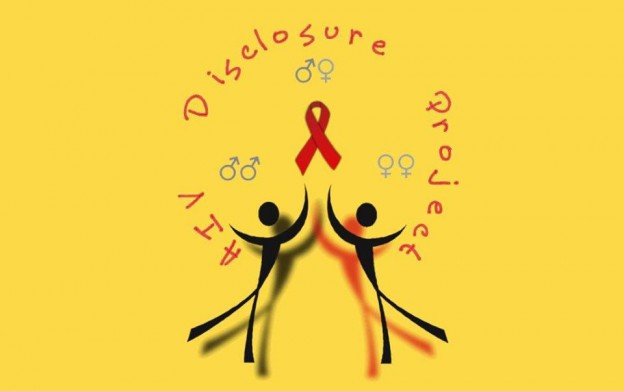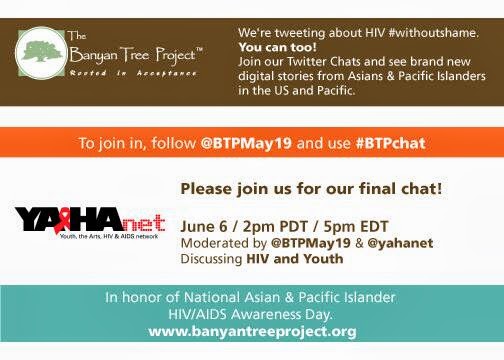“Positive Sex ideally would involve disclosure being met with acceptance and understanding, not rejection and stigma. Positive Sex would involve the elimination of terminology that is discriminatory on the dating scene and a shift within the public whereby people would consider dating a person living with HIV, without fear or stigma.”- Gail from the HIV Disclosure Project.
The HIV/AIDS pandemic of the 1980s led to a surge of condom campaigns. Now when we hear the term “safe sex” we immediately associate it with male condoms, the Pill, unwanted pregnancy, STIs. HIV transmission is discussed in sex education, but what’s neglected are the specifics about HIV as it is today: how it is manageable, what “undetectable” means, why terms like “clean” are harmful, what the hell is PReP (Pre Exposure) and PEP (Post Exposure Prophylaxis). And we certainly never discuss the possibility of having a healthy sexual relationship with a person living with HIV.
The reason is because, frankly, there is still fear associated with the virus. People like Gail, Jessica and Jolene, founders of the HIV Disclosure Project, know that HIV stigma persists just as it did 30 years ago. It permeates our fears of “death, dying, contracting the virus through protected sex, casual contact, fear of dating a person who is living with HIV as others may think they are positive as well (guilty by association). Fear that people living with HIV are highly contagious”, Gail describes in our interview. “Many people know the facts about transmission and yet are afraid that there might be some “unusual” accident which will lead to infection.”
The Stigma Cycle

Safe sex messages have traditionally been built on fear and as a result, the campaigns have failed miserably; from that fear is born stigmatization and prejudice against people who are HIV-positive. People who choose to disclose their status risk being verbally and physically abused, risk rejection and isolation, risk discrimination by being “outed” (loss of control over who knows their status), risk discrimination in the workplace, schools, with housing, health care and violations of basic human rights. People are deterred from getting tested and treated regularly; it results in silence about one’s status; thus the virus continues to be transmitted. “It’s what we refer to as the Stigma Cycle,” Gail explains.
To fight the stigma born out of fear, the HIV Disclosure Project facilitates open discussions about how to make the dating scene more inclusive of people living with HIV. “We provide a safe, non-judgmental space for people living with HIV to role play, practice a variety of techniques for disclosing if they choose to, while aiming to empower individuals to have options, externalize stigma and challenge public perception of people living with HIV. We want to have PSAs (public service announcements) that ask the question – Why not have sex with someone who is living with HIV?”
 The HIV Disclosure Project
The HIV Disclosure Project
The idea for the Project started with three colleagues- Gail, Jessica and Jolene -who saw a need for a supportive workshop where people living with HIV could “discuss, disclose, practice disclosure, find comfortable and timely ways to gauge when to disclose or not, and to process feelings that derived from stigma and rejection,” Gail says.
“People living with HIV also needed a space where they could challenge and change dating terminology which perpetuated stigma and fear of HIV, including terms such as “clean”, “disease free” and “dirty”. New terminology was needed to describe one’s status that excluded negative connotations and included acceptance, tolerance, and a willingness to consider dating a person who is living with HIV.”
At the time, there were no written manuals on disclosing HIV to sex partners. Granted funding from ACCM (AIDS Community Care Montreal), the three colleagues wrote a manual titled “Positive Sex” and designed a pilot workshop that resulted in much success. The Disclosure Project received further funding from the CIHR (Canadian Institute on Health Research) through CTAC (Canadian Treatment Access Council) where Jolene works as Program Manager. Workshops are now being implemented across Canada in collaboration with ACCM. Jessica facilitates these workshops.
I asked Gail how we might de-stigmatize sexual relationships for people living with HIV. The answer might seem controversial but it reflects upon the fear tactics that are often utilized in government supported sex ed programs and why we need to adopt Positive Sex frameworks in public health.
“What needs to be reinforced in the mainstream are the basic facts about HIV transmission and repeated public service announcements and education which tells the public that it is socially acceptable to have safe sex with a person living with HIV, that having sex with a person living with HIV does not mean they are going to contract HIV. There are many sero- discordant couples who have been in long term relationships where the HIV negative person remained negative.”
“Positive Sex” is the new “Safe Sex”

Gail, Jessica and Jolene bring up an important point about the meaning of “safety” that is taught in sex education. What’s often overlooked are issues of emotional safety, such as consent and self-esteem, that are both cause and effect of sex. Few curricula teach consent or communication in a way that is relevant to sexual diversity. Instead, outdated sex education shames discussions of sexual pleasure and desire, and the different types of relationships humans are a part. The Disclosure Project views this type of shaming in opposition to what is positive sex.
As Gail explains, “Positive sex to us means finding ways to successfully disclose one’s HIV status while not feeling threatened, stigmatized or experiencing any negative reactions while disclosing. Positive Sex also involves challenging and changing public perceptions of people living with HIV. In the past, safe sex campaigns were based on fear and as a result, thirty years into the pandemic, there are many misconceptions that perpetuate fear and stigma which need to be challenged.”
“Positive Sex ideally would involve disclosure being met with acceptance and understanding, not rejection and stigma. Positive Sex would involve the elimination of terminology that is discriminatory on the dating scene and a shift within the public whereby people would consider dating a person living with HIV, without fear or stigma.”
To learn more about The HIV Disclosure Project follow them on twitter @sexpartnersHIV. Like their Facebook Page for daily prose, thoughts and poems related to HIV and disclosure.
For information on HIV transmission, prevention, safety and risks refer to ACCM and CTAC. There are a lot of them, but other helpful resource are: CareXO.com, the YAHAnet (Youth, the Arts, HIV & AIDS Network) and The Life Foundation. There is also an excellent article by The Body.com with medical information about the risks HIV transmission when having sex with someone who has undetectable viral levels. Keep yourself informed!


 Real life storytelling is a powerful way to raise awareness about HIV and stigma. Stories not only convey information but they also communicate values that relate the storyteller and the listener in more nuanced ways. The
Real life storytelling is a powerful way to raise awareness about HIV and stigma. Stories not only convey information but they also communicate values that relate the storyteller and the listener in more nuanced ways. The 